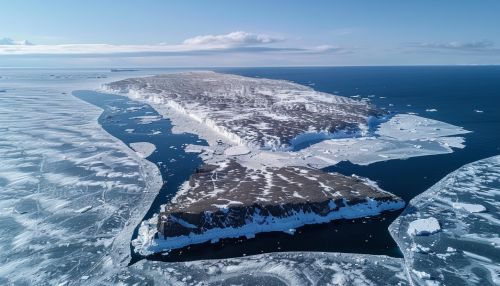Rothschild island
Geography
Rothschild Island is an ice-covered island, approximately 55 km (34 mi) long and ranging from 15 km (9 mi) to 37 km (23 mi) wide, lying in the Amundsen Sea off the coast of Marie Byrd Land. The island is almost entirely covered by glaciers which are part of the larger West Antarctic Ice Sheet. The island is separated from the mainland by the Getz Ice Shelf to the east, and the Dotson Ice Shelf to the south.


History
The island was first sighted from the air by the United States Antarctic Service (USAS) on December 5, 1940. It was named by the Advisory Committee on Antarctic Names (US-ACAN) for the Rothschild family, who were prominent contributors to exploratory and scientific expeditions during the early 20th century. The Rothschilds were particularly interested in ornithology, and financed several expeditions to collect specimens of Antarctic bird species.
Geology
The geology of Rothschild Island is largely obscured by its ice cover. However, it is known to be part of the larger West Antarctic Rift System, a series of rift valleys that extend across West Antarctica. The island is believed to be composed primarily of basaltic rock, similar to other islands in the region.
Climate
Rothschild Island experiences a polar climate, with temperatures rarely rising above freezing. The island is subject to strong katabatic winds, which are gravity-driven winds that can reach speeds of up to 200 km/h (124 mph). These winds can cause rapid changes in weather conditions, making the island a challenging environment for exploration and research.
Flora and Fauna
Due to its extreme climate and ice-covered surface, Rothschild Island supports little in the way of flora and fauna. However, the surrounding waters are rich in krill, which attracts a variety of marine life, including seals and various species of birds.
Research and Exploration
Rothschild Island has been the subject of a number of scientific research expeditions. These have primarily focused on studying the island's glaciers and their contribution to sea level rise. The island is also used as a base for studies of the surrounding marine ecosystem.
